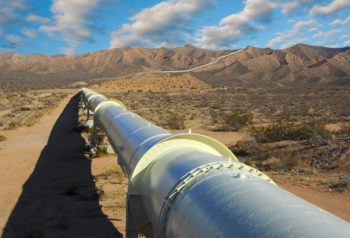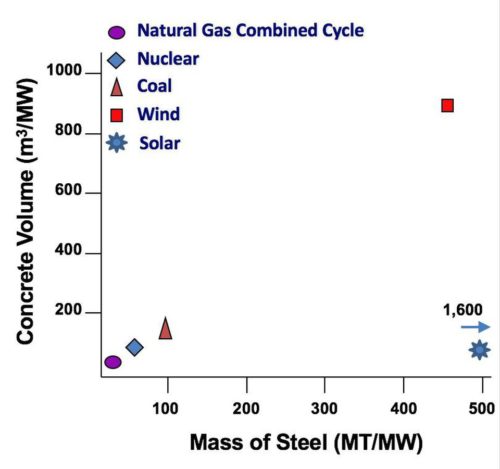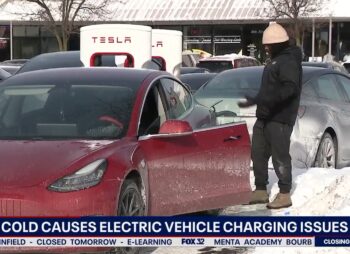
The concept of supersizing pipelines is taking hold in the United States and Canada to address the growing dearth of pipelines in areas where oil production is increasing but can’t get to the refineries in the Gulf.
At the same time, natural gas use is increasing in places that don’t have many pipelines and where the public is strongly against building new pipelines.
A bigger pipeline along the same route as the older smaller one is cheaper to build than a bunch of new small ones. It also falls under the existing permits and rights-of-way of the old pipe. And the public doesn’t have to approve any new pipeline routes.
Supersizing also increases safety and ensures less environmental impact since you’re not building additional lines, but replacing an old one with a new one, and older lines are more likely to leak or fail completely, like the Colonial Pipeline Spill.
Increasing the diameter of a pipe increases the flow within it much more than you might think. In fact, the volume of flow per minute goes as the fourth power of the change in diameter. This means, if you double the diameter, you increase the flow by 16 times – (2^4 = 2 x 2 x 2 x 2 = 16).
Enbridge is a good example. The company has replaced a 26-inch-diameter shale gas line running from Pennsylvania into New England with a 42-inch line. That doesn’t seem like much, it’s only 1.6 times as big. But raised to the power of four, this new pipeline can carry six times as much gas as the old one.
‘Once the pipe is in the ground, you can do a lot of things: reverse flows, expand it, optimize it,’ said Al Monaco, President and Chief Executive of Enbridge.
These types of upgrades have essentially made the controversial portion of the Keystone XL pipeline unnecessary.
Of course, if you don’t have old pipelines, supersizing doesn’t help. Parts of the U.S. simply need more pipelines, especially where fracking has unleashed huge amounts of oil and gas in areas that didn’t have a lot of pipelines anyways.
New England is a good example.
New England is closing their nuclear plants faster than you can say “who cares about science.” They are replacing them with natural gas and renewables. But there are hardly any gas pipelines in the region.
They are forced to import liquefied natural gas from places like Russia or use dirty oil plants when demand is high, like this last winter. When this happens the customers in New England pay a high price for their electricity, sometimes ten times the normal price.
Yet, the people of New England do not want more gas pipelines.
The citizens of New England also want more renewables, whose electricity has to be imported into the northeast from other regions, especially hydropower from Canada. But this requires installing high voltage transmission lines which the public keeps voting down.
When the public does not listen to scientists and experts, things don’t go well. This problem is engulfing the energy sector. The public seems to care about climate change, but don’t want to do what the climate scientists advise – to increase nuclear and renewables – because they reject them, or their infrastructure requirements, out of ignorance.
And they aren’t putting solar panels on their roofs very much either.
So next year, they will wonder why electricity costs keep going up, their carbon emissions keep going up, and their black-outs keep getting longer.
Natural gas is the fastest growing energy source in America. Replacing coal plants with gas plants is the only reason our carbon emissions are at a 27-year low. It’s the easiest power plant to build, requires the least amount of steel and concrete (see figure above), is the easiest to permit, will have cheap fuel for decades, and is vastly preferred over coal.
However, it requires pipelines to deliver the gas and no one seems to like them. You can ship gas as liquefied natural gas (LNG), which is what happens a lot in the New England, but that’s three times more expensive and we have very limited LNG facilities.
This is a classic case of the public misunderstanding how the real world works. These issues are somewhat complex and you have to juggle a lot of conflicting issues. Our oil pipelines themselves are generally old (see figure above). Half of them are older than 40 years. Some date from before World War One.
They need to be replaced, and new ones built, or we risk the environmental damage feared by those who don’t want them at all. Just supersizing the oldest half would be tremendous, and remove most of the need for additional pipelines.
Our pipelines, refineries and transmission lines are all at capacity. When problems occur, there’s no backup plan. We have over 3,000 blackouts a year, the highest in the developed world. It’s why the American Society of Civil Engineers gave America a D+ on our 2017 Infrastructure Report Card.
Somewhere around 1985, we became the world’s richest, most powerful, greatest nation in the history of the world. But we still have to work hard to remain the best. It doesn’t just maintain itself. And infrastructure is where long-term neglect first shows, often catastrophically.
So we need to upgrade our transmission lines and transformers, build new non-fossil power plants and supersize our pipelines.
We can’t afford not to.
h/t Science Matters
Read more at Forbes



















Can anyone still remember the Trans-Alaska Pipeline and the oppisition from the infamous Sierra Club tried all they could to block the pipeline and failed and the wildlife is benifiting from the heat the pipeline produces they keep warm on those cold Alaska nights
Stupid socialists… XL pipelines increase carbon taxes exponentially. Build them NOW!
Oops… enviro-mental psychopaths don’t understand socialists’ addiction to OPM.